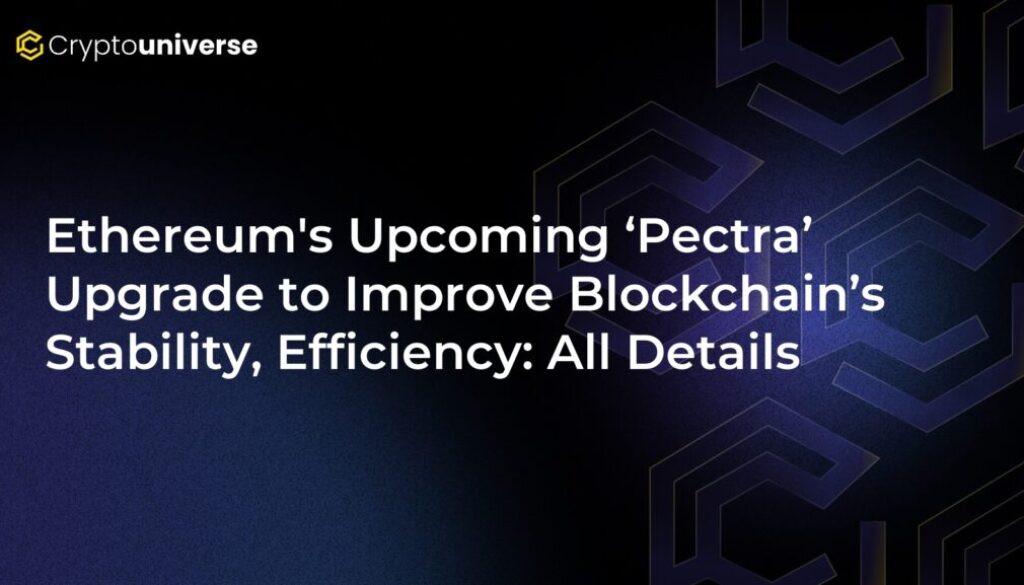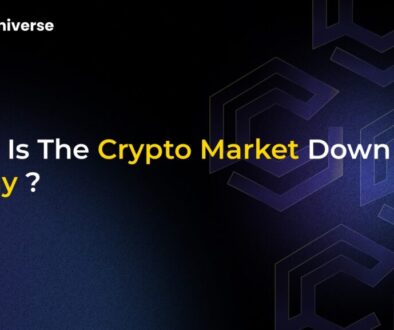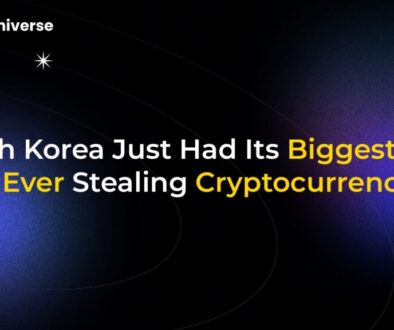Ethereum’s Upcoming ‘Pectra’ Upgrade to Improve Blockchain’s Stability, Efficiency: All Details

Ethereum Gears Up for Major Pectra Upgrade: What You Need to Know
Ethereum, the powerhouse blockchain known for its smart contract capabilities and vibrant ecosystem, is preparing for its next significant evolution: the Pectra upgrade. Following hot on the heels of previous enhancements like Dencun and The Merge,
Initially anticipated earlier, the complexity and thorough testing required for such a large-scale upgrade mean Pectra is now targeting a deployment window further out, potentially in 2025. While timelines in blockchain development can shift, the core goals remain clear: to make Ethereum more robust, user-friendly, and scalable.
What Exactly is the Pectra Upgrade?
The name “Pectra” itself is a blend of “Prague” (where the Devcon IV conference was held) and “Electra” (a star in the Taurus constellation). It signifies a combination of improvements targeting both Ethereum’s execution layer (responsible for processing transactions and smart contracts) and its consensus layer (which ensures network agreement).
Pectra isn’t just a single change; it’s a collection of Ethereum Improvement Proposals (EIPs) bundled together. According to developers and researchers, it’s shaping up to be one of the largest upgrades in terms of the number of EIPs included, touching various aspects of the network.
Key Features Driving Ethereum Forward
Pectra introduces several exciting features designed to enhance the Ethereum experience:
1. Advancing Account Abstraction (EIP-7702)
One of the most talked-about components is EIP-7702, which pushes Ethereum’s “account abstraction” capabilities forward. Traditionally, Ethereum has two main account types: Externally Owned Accounts (EOAs), controlled by private keys, and Smart Contract Accounts.
Pectra aims to bridge the gap, allowing EOAs to temporarily act like smart contracts within a single transaction. This brings several benefits:
- Simplified Transactions: Users could potentially approve a token spend and execute a swap in one single transaction, reducing steps and potential points of failure.
- Enhanced Flexibility & Security: It opens the door for features like social recovery, spending limits, and more sophisticated wallet functionalities directly tied to user accounts, blending the simplicity of EOAs with the power of smart contracts.
This is a crucial step towards making crypto wallets more intuitive and secure for mainstream users.
2. Major Enhancements for Validators and Stakers (EIP-7251)
For those securing the network by staking ETH, Pectra brings significant quality-of-life improvements:
- Increased Maximum Effective Balance: EIP-7251 raises the maximum stake amount per validator that earns rewards from 32 ETH up to 2048 ETH. This simplifies operations for large stakers and staking pools, reducing the need to manage numerous individual validators.
- Automatic Reward Compounding: Smaller stakers benefit as this change enables automatic compounding of staking rewards without needing to spin up new validators constantly.
- Improved Validator Experience: Other EIPs included aim to streamline the validator lifecycle, such as improving the withdrawal process (EIP-7002) and removing legacy delays related to deposits (EIP-6110).
These changes aim to make staking more efficient and potentially more profitable, contributing to the network’s overall
3. Gas Fee Flexibility
Pectra is expected to introduce mechanisms for “Gas Sponsorship.” This could allow users or applications to pay transaction fees (gas) using tokens other than ETH, or even have fees sponsored by third parties. This adds flexibility and could lower barriers for users who don’t hold ETH but want to interact with applications on the network, boosting
4. Supporting Layer-2 Scalability
Building on the foundation laid by the Dencun upgrade (which focused on reducing costs for Layer-2 rollups), Pectra includes further improvements aimed at enhancing the scalability and
Why Pectra Matters for Ethereum’s Future
The
- User Experience: Making wallets smarter and transactions simpler through account abstraction.
- Validator Efficiency: Streamlining staking and improving rewards mechanisms.
- Scalability: Continuing to support and enhance Layer-2 solutions.
- Stability: Refining the core protocol for long-term robustness.
Pectra addresses key areas needed for continued growth and adoption. It demonstrates Ethereum’s commitment to ongoing evolution, adapting to the needs of its users and the broader Web3 landscape.
Looking Ahead: The Road to Pectra
As Ethereum developers work towards finalizing and testing the Pectra upgrade, the ecosystem watches with anticipation. While the final deployment is likely set for 2025, the groundwork laid by Pectra promises to significantly enhance the network’s capabilities.
Following milestones like The Merge (Proof-of-Stake transition), Shanghai (Staked ETH withdrawals), and Dencun (Layer-2 fee reduction), Pectra marks the next chapter in Ethereum’s journey to become a more scalable, efficient, and user-friendly global settlement layer. Keep an eye out for


